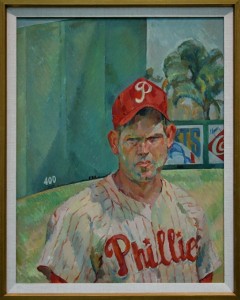Will any of today’s – or tomorrow’s – generation of major league pitchers garner 300 wins or complete 150 games? Toss 20 complete games or pitch 300 innings in a single season? Given the way the game is played today, any or all seem pretty unlikely. It is, in many ways, a whole new ball game for pitchers – and it’s not the pitchers’ fault. (Okay, it’s not that new … a lot of the change occurred during my lifetime.)
Let’s look at some of the factors.
Five-man Rotations
As we moved into the 1970s, teams started moving from four-man to five-man pitching rotations. Fewer starts, fewer opportunities for wins, complete games, innings pitched. (Notably, swifter travel – trains not planes – has contributed somewhat to this. With more travel time meaning more days between games, fewer pitchers were needed . The change, however, goes deeper than five-man rotations and time between starts. Read on.)
The “Quality” Start
In today’s game, 6 innings and 3 or fewer runs is a quality start. Starting pitchers, as recently as the 1980s, would have considered six innings pitched a day off. Pitchers are no longer expected to finish what they start.
The Advent of the Save
Years ago, relief pitchers were mostly starters past their prime brought in to “mop up.” In fact, the “save” was not even established as a statistic until 1969 (saves were awarded retroactively for seasons prior to 1969).
The Rise of Relief Specialists
Today, not only does the manager look to the closer (primarily for the ninth inning), the bullpen also features key “set up” men, earmarked for the seventh or eighth inning. And, not only do most teams have their seventh- and eighth-inning specialists, we also have people on the bench ready for long- and middle-relief. No wonder managers are so quick with the hook. They’ve got to keep that multi-million dollar bullpen happy.
The Dreaded Pitch Count
And, of course, there is the “pitch count,” considering the financial investment teams have in pitchers, the thinness of pitching staffs (we do, after all, now have thirty teams), pitchers are treated with great care, often held to pitch counts in the neighborhood of 100 – no matter how well they are throwing.
So, how significantly has all this changed the game? Here’s some statistical evidence.
The Vanishing Complete Game
It wasn’t until 1955 that we saw a league leader in complete games with less than 20 finished starts (Whitey Ford, Yankees, 18 CGs). And, 1980 was the first year that a league leader notched less than 14 complete games. The last time, we saw 20 complete games in a season? Fernando Valenzuela in 1986. James Shields, in 2011, became the first pitcher to reach double-digits (11) in complete games in a dozen years – and earned a reputation as an iron man.
Roy Halladay is considered the current king of the complete game having led the AL in complete games in 2003, 2005, 2007, 2008, and 2009 – and led the NL in 2010 and 2011. He did all of this without ever completing 10 games in a season. In his career (as this blog is written), Halladay has started 363 games and completed 66 (18%). By comparison, in 1975, the average percentage of complete games among all MLB starters (the good, bad and ugly) was 27%. The 1975 CG leaders, Catfish Hunter and Andy Messersmith, ended up with career percentages of games finished to games started of 38% and 33%, respectively. If we look at MLB complete game stats over time, we can be pretty sure we’ll never see numbers like those again.
– In 1900, 82.3% of games started were complete games;
– 1925 – 49.2%
– 1950 – 40.3%
– 1975 – 27.2%
– 2000 – 4.8%
– 2011 – 3.6%
We’ll also never see a pitching machine like Jack Taylor. Between 1901 and 1906 (Cubs and Cardinals), Taylor threw a record 187 consecutive complete games; or Will White (Cincinnati), who in 1879 completed a single-season record 75 complete games (in 75 starts). White went 43-31 that year, with a 1.99 ERA and 680 innings pitched. For his career, White completed 394 of 401 starts. Closer to today’s game, in 1968, Don Drysdale set a record by tossing six consecutive complete game shutouts.
The Dwindling of Innings Pitched
Innings pitched? Think about this. From 1950-59, Robin Roberts AVERAGED 301 innings pitched per season. And, if you pick any decade from 1900 through 1979, the average innings pitched for the league leaders was over or near 300. However, innings pitched have dropped significantly since Steve Carlton became the most recent pitcher to hurl 300 innings in (1980). For the last decade, the average for league leaders has been shy of 250. (As you might expect, Will White of the 75 complete games single-season record also holds the single-season innings pitched record at 680.)
Here’s the chart of average innings pitched by league leaders (by decade) with major strike-shortened seasons deleted:
Decade Average Innings Pitched by League Leaders
1909-09 350
1910-19 348
1920-29 318
1930-39 304
1940-49 305
1950-59 294
1960-69 303
1970-79 327
1980-89 279
1990-99 261
2000-09 244
2010-11 247
Pitch Counts
You’ll also never see a game line-score like this one again.
May 1, 1920
Brooklyn 000 010 000 000 000 000 000 000 00 1 9 2
Boston 000 001 000 000 000 000 000 000 00 1 15 2
What’s so special about this line score? Starting pitchers Leon Cadore of Brooklyn and Joe Oeschger of Boston (NL) both went the distance – with the game called due to darkness after 26 innings. Both starters threw more than 300 pitches (analysts estimate Cardore at 345 and Oeschger at 319). Oh, and here’s another factoid, the time of the 26-inning contest was only 3:50 minutes.
And, with that look at another way the game has changed, I’ll end this rant and just say, I miss the days when hurlers were expected to finish what they started and when most games did NOT result in a parade of relief specialists. But, I don’t blame the pitchers – the game has just changed.













